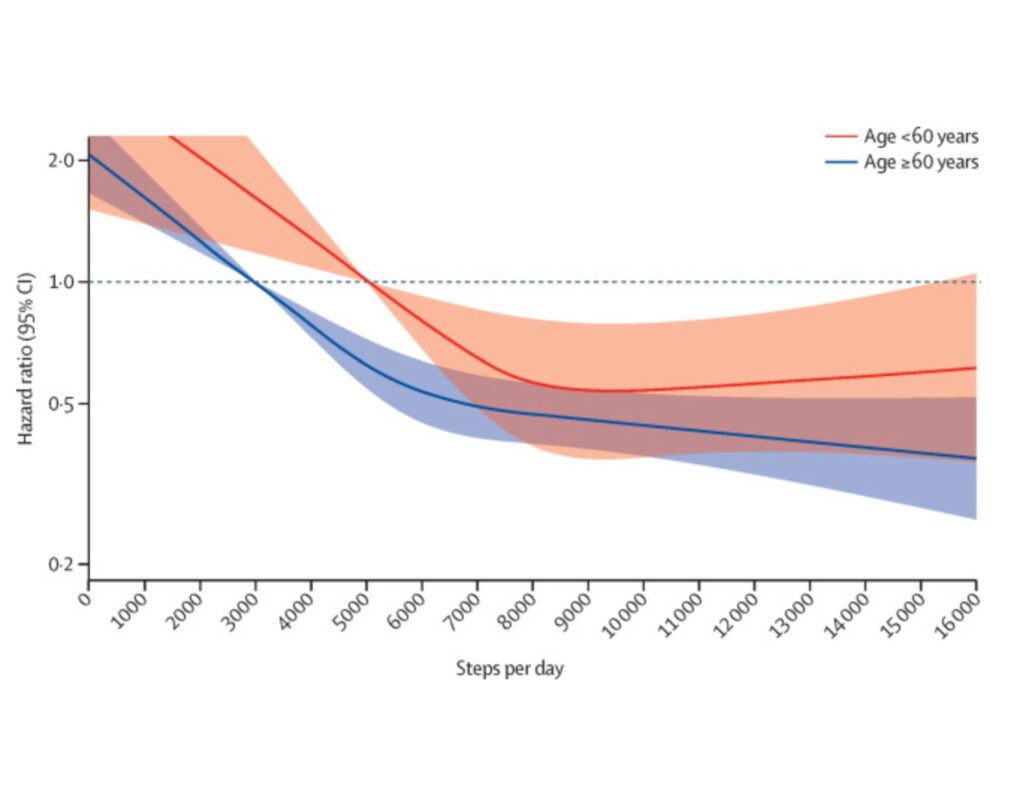As people take more steps per day, the relative risk of dying drops sharply
Piles of studies spanning 70 years consistently show that regular physical activity pays off in long-term health benefits. And recent work is starting to paint a clearer picture of all the activities that can help.
I will never forget how a spry 94 year old woman made me realize the notion that movement is life. Whenever her daughter brought her in for a routine check up I was amazed at her physically vibrancy and mentally sharpness. She could easily pass for being 15 years younger. After a year went by without me seeing her I received a call from her daughter informing me that she had become bedridden due to a back injury as a result of a fall while dancing at a wedding reception. Over the ensuing 5 months her health steadily declined until she past away.
In the US currently 80% of adults aren’t doing enough physical activity. Adults need at least 150 minutes of moderate physical activity or 75 minutes of vigorous activity per week plus muscle-strengthening activities at least two days per week.
How Physical Activity Improves Health Outcomes
In the last year, scientists have shown people who did more physical activity were less likely to be hospitalized for common conditions like gallbladder disease, diabetes and urinary tract infections. These data add to recent survey-based studies and linking exercise with lower risk of death due to flu and pneumonia, and improvements in memory and attention.
Another study in 2022 linked just three and half minutes of daily vigorous activity with a roughly 18 percent reduction in cancer risk. One such vigorous exercise that can be done in this amount of time is the Nitric Oxide Dump demonstrated on YouTube by Zack Bush.
Study after study has demonstrated the benefit of physical activity and that it is never too late to start. In one study of more than 100,00 people age 65 and older, both aerobic training and muscle strengthening lowered the risk of dying over the next eight years.
How Many Steps Should we be Taking Each Day?
As you can see from the adjoining graph for mortality benefits, people age 60 or older should shoot for 7,000 steps a day, and people younger than 60 should shoot for 9,000. Of course this is not a all or nothing benefit. If you do nothing, just do a little bit. If you already do little bit, do a little bit more. In fact the biggest benefit comes from people who go from doing nothing to doing, just a little bit.
Terry Pfau DO, HMD

